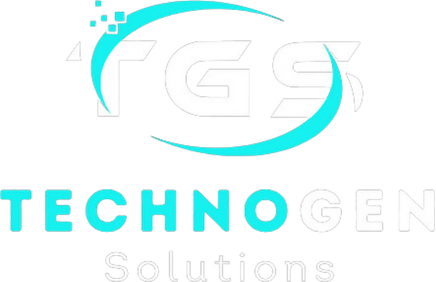In today’s highly competitive digital landscape, SEO is more important than ever for ensuring your website stands out from the crowd. It’s not just about ranking high in Google search results but also about providing users with quality content that matches their intent. By leveraging advanced SEO tactics, you can significantly enhance your site’s performance, attract organic traffic, and improve conversion rates.
1. Keyword Research: The Foundation of SEO Success
1.1 Long-Tail Keywords: Targeting Niche Audiences
One of the most effective strategies in advanced SEO is focusing on long-tail keywords. These are specific phrases that users enter when they’re closer to making a decision. By targeting these highly specific keywords, you can capture more qualified traffic. Tools like Google Keyword Planner, Ahrefs, and SEMrush can help you identify relevant long-tail keywords that are less competitive but still highly valuable.
1.2 Semantic Search: Optimizing for User Intent
With Google’s Hummingbird and RankBrain algorithms, understanding user intent has become crucial. You should not only focus on exact keyword matches but also include variations and related terms that Google may associate with the primary search term. This helps your content rank for a wider range of queries, improving overall search visibility.
2. On-Page SEO Optimization: Enhancing Website Structure
2.1 Title Tags and Meta Descriptions: Maximizing CTR
Title tags and meta descriptions are the first things users see when your website appears in the search results. Crafting engaging, keyword-rich titles and descriptions can improve your click-through rate (CTR), driving more traffic to your site. Ensure that your title tags are no longer than 60 characters and that your meta descriptions stay under 160 characters to avoid being cut off in the search results.
2.2 Heading Tags (H1, H2, H3): Structuring Your Content
Using proper heading tags helps both users and search engines understand the structure of your content. The H1 tag should be used for the main title, followed by H2 and H3 tags for subheadings. This not only improves readability but also boosts SEO by allowing search engines to better crawl and index your pages.
2.3 URL Optimization: Keeping It Clean and Keyword-Rich
Your URLs should be concise and keyword-rich. Avoid using long, complicated URLs that contain irrelevant numbers or symbols. A clean, easy-to-read URL improves both user experience and SEO rankings. For example, instead of using a URL like “www.example.com/1234-page,” use “www.example.com/seo-tips.”
3. Content Optimization: The Heart of SEO
3.1 Content-Length and Depth: Go Beyond the Basics
Search engines favor content that is not only high-quality but also comprehensive. Longer content tends to perform better in search rankings because it provides in-depth coverage of a topic. Aim for articles that are at least 1,500 words, incorporating subheadings, bullet points, and visuals to enhance readability.
3.2 LSI Keywords: Enhancing Context and Relevance
Latent Semantic Indexing (LSI) keywords are words and phrases related to your primary keyword. Using LSI keywords in your content helps Google understand the context better, improving your chances of ranking for a variety of related terms. Tools like LSIGraph can assist in finding these valuable keywords to include in your articles.
3.3 Internal and External Links: Building Authority
Linking to both internal and external resources can significantly boost your SEO. Internal linking helps distribute authority throughout your website, improving the rankings of individual pages. External links to reputable sources can enhance the credibility of your content, which in turn can improve your search rankings.
4. Technical SEO: Optimizing Backend Performance
4.1 Mobile Optimization: Adapting to the Mobile-First Index
With Google’s shift to mobile-first indexing, ensuring your website is fully optimized for mobile devices is no longer optional—it’s a necessity. Use responsive design to make sure your site looks and functions well on all devices. You can also test your site’s mobile performance using Google’s Mobile-Friendly Test tool.
4.2 Page Speed: Enhancing User Experience and Rankings
Page speed is a critical ranking factor, as slow-loading websites lead to poor user experiences and higher bounce rates. Tools like Google PageSpeed Insights and GTMetrix can help you identify issues that are slowing down your site, such as unoptimized images, excessive redirects, or too many plugins.
4.3 Schema Markup: Structuring Data for Better Visibility
Schema markup is a form of structured data that helps search engines understand your content better. By adding schema to your site, you can improve how your site appears in the SERPs (Search Engine Results Pages) with features like rich snippets, star ratings, and event listings. This can dramatically increase your CTR.
5. Off-Page SEO: Building Your Website’s Authority
5.1 Link Building: Earning Quality Backlinks
Backlinks from high-authority websites are one of the strongest signals to Google that your site is trustworthy. Focus on earning backlinks from reputable sites within your industry through methods such as guest posting, content partnerships, or creating infographics. Avoid spammy backlinks, as they can lead to penalties from Google.
5.2 Social Media Signals: Enhancing Engagement
While social media doesn’t directly impact SEO, the engagement it drives can indirectly influence your rankings. Shares, likes, and comments help build brand awareness and bring more traffic to your site. Platforms like Facebook, LinkedIn, and Twitter can be effective channels for distributing your content and attracting backlinks.
5.3 Local SEO: Capturing Regional Traffic
For businesses targeting a local audience, local SEO is essential. Ensure that your business is listed on Google My Business and that your NAP (Name, Address, Phone number) is consistent across all directories. Use local keywords in your content, and encourage positive customer reviews to boost your local search presence.
6. Measuring SEO Tactics: Analytics and KPIs
6.1 Google Analytics: Tracking User Behavior
Regularly monitoring your site’s performance through Google Analytics can provide valuable insights into user behavior, traffic sources, and conversion rates. Pay attention to metrics like bounce rate, average session duration, and pages per session to gauge how well your site is performing.
6.2 Search Console: Monitoring Search Performance
Google Search Console is another powerful tool for tracking your website’s SEO performance. It provides data on click-through rates, impressions, and average ranking positions. Use this information to adjust your SEO strategy to improve pages that aren’t performing well in search results.
6.3 A/B Testing: Continuous Improvement
To continually optimize your SEO efforts, consider running A/B tests on key elements such as title tags, meta descriptions, and content structure. You can identify what works best by testing different variations and making data-driven decisions to improve your site’s performance.



Leave A Comment